The dirt Jumper bikes craze is taking the globe by storm.
It began as an adrenaline-fueled way to race off-road on specialized dirt bikes, often with no more than a crash helmet, goggles, and a go-pro camera strapped on your chest.
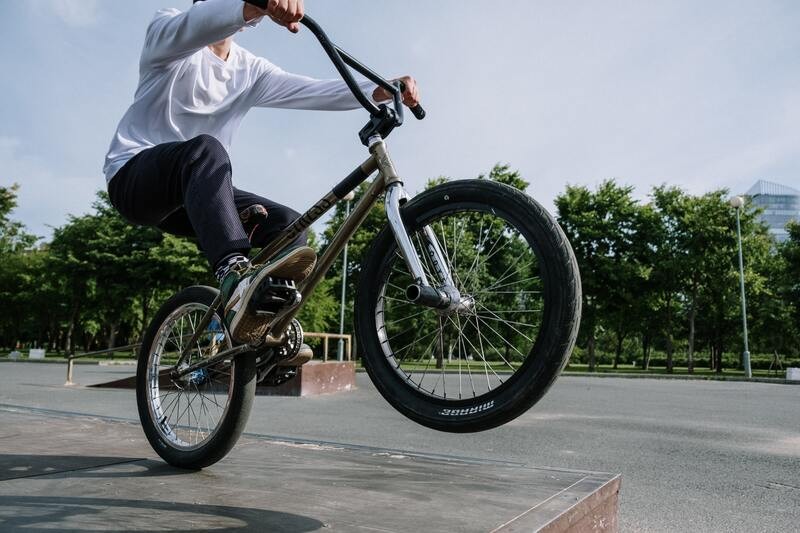
The thrill of dirt jumping has drawn in people from all walks of life – with growing participation every year; it’s becoming an increasingly popular way to have some “fun” time outside work.
Having said that now you might be looking to purchase a dirt jumper bike for the first time but want some guidance before making an investment.
So you have come to the right place because, in this ultimate guide to dirt jumper bikes, you will find accurate information that will surely help you make the best deal possible.
What are Dirt Jumper Bikes
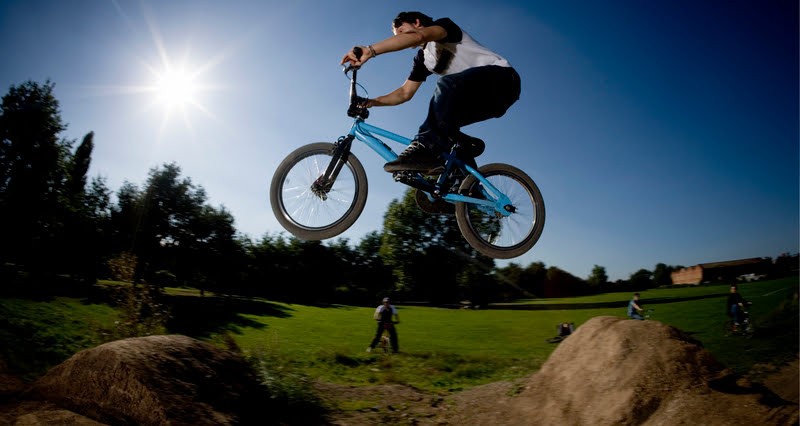
Dirt jumper bikes are specifically designed for hitting massive jumps.
They have a longer wheelbase and a higher bottom bracket to provide more stability when jumping and landing. Dirt jump bikes also typically have a slacker head angle and longer fork to reduce steering response and help stabilize at high speeds.
Most dirt jumper bikes come equipped with suspension forks, which help absorb the impact of landing on the ground after a jump. Some dirt jumper bikes also feature balloon tires, which increase traction on the ground and improve maneuverability in tight spaces.
Factors to consider when purchasing Dirt Jumper Bikes
Purchasing a dirt jumper can sound as exciting as it is riding. However, please pause your buying emotions and look at the different factors that separate dirt jumpers from each other.
The following factors are selected to assist you in making an informed decision before you make a purchase.
Dirt Jump Bike Geometry
It’s no secret that dirt jumping has seen a recent spike in popularity. With more riders looking to get their feet wet, 26″ dirt jumper bikes have become the go-to choice for many. When it comes to geometry, not much has changed over the years.
The most significant difference you’ll notice is the slight increase in the top tube length, which is beneficial in dirt jump, pump track, and BMX tracks.
This is primarily due to the lengthening of mountain bike frames, which has mirrored the evolution of modern dirt jumping.
Most dirt jumper bikes are offered in one size, so there is no need to worry about finding a model that fits your needs.
However, because these bikes are built for speed and precision, you may want to make sure you select a bike that is properly sized for you.
Tires
Dirt Jumper bike tires are designed to provide maximum grip, so you can launch yourself into the air as high as possible without fearing falling off.
Hence, riders prefer to ride their DJ bikes with slightly slick tires to experience minimal rolling resistance because this reduces the energy required to move the bike over the ground, making it faster and easier to ride.
Additionally, this reduced resistance also allows riders to stay in the air for longer, giving them superior aerial performance.
Fork
A fork is a crisis tool for advanced dirt jump and pump track riders.
If you’re doing a big jump and your bike loses traction, you can use the DJ fork to help control your descent. But be warned: Forking too much can lead to a crash.
When riding on a dirt track, keeping your bike balanced is essential. You need to have enough traction to stay on the track, but you don’t want to be so overloaded with a grip that you can’t get off the ground if something goes wrong.
An excellent way to achieve this balance is by using the fork. When you start losing traction, you have to flick the fork up into the air, which will act as an extra layer of grip.
This gives you enough control to make a safe landing without worrying about losing too much speed.
Brakes
Disk brakes are popular on dirt jumper bikes because they offer more stopping power than traditional hydraulic brakes. They’re also less likely to corrode and last longer than mechanical brakes.
These brakes use a rotating disk to apply pressure to the hub, which stops the bike. Because disk brakes are not dependent on oil or water, they are generally more reliable than hydraulic brakes.
Riding Style
There’s no one right answer when it comes to dirt jumper sizing. It all depends on what type of rider you are and what kind of dirt jumping you’re looking to do.
There are two different types of riders.
The first type is the person who loves driving long mountain bikes. They’ll love the comfort and stability that a longer dirt jump bike provides.
These riders should go with a long dirt jump bike.
The second type of rider is someone who loves tight-plus-clickable bikes. They need a quick and responsive bike to make the most of their tricks.
These riders should go with a shorter dirt jump bike. This will give them more control over their tricks and make them more proficient at landing.
Suspension
Dirt jumping is a fast-growing sport that involves riding dirt bikes over large jumps. The bike must be able to handle the bumpy terrain, and the rider must be able to stay in control.
A suspension fork provides a more comfortable ride on rough roads because it absorbs shock better than a rigid fork. This is why many dirt jump bikes come with suspension forks.
A suspension fork also allows the rider to move their body more freely while riding, which adds to the overall experience.
Frame Material
Chromoly (steel) is the most common frame material utilized for dirt jumper bikes. It is durable and lightweight, making it a popular choice for those looking for a dirt jump bike that is both affordable and reliable.
Less expensive steel models may use fewer quality materials, leading to long-term durability issues.
So, when selecting a dirt jump bike, it is crucial to consider its frame material and weight before making a purchase.
Stack & Reach
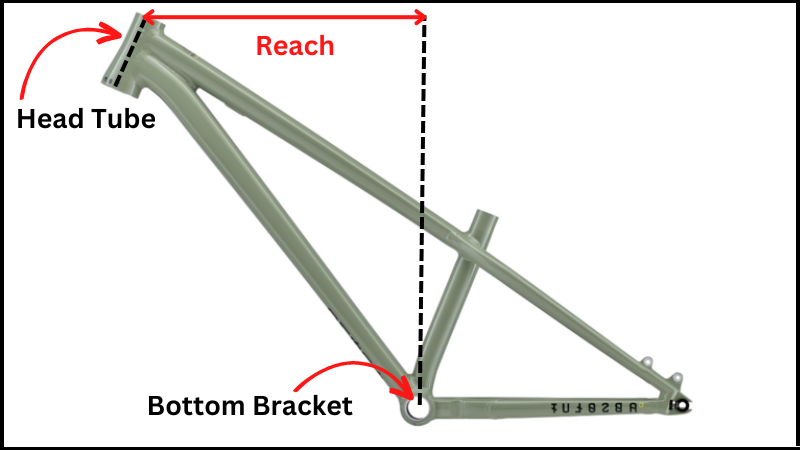
You need to measure your stack and reach to nail your cycling position. A wrong choice will lead to poor performance. If you get the technique right, you will be well on your way to achieving your personal best.
Hence, it is important to consider two of the most important measurements when contemplating riding position: stack and reach.
There is no doubt that a greater stack will put you in a more upright riding position, with your hands moving upwards and your body positioned at a more vertical angle due to the greater stack.
Conversely, when the stack remains the same, but the reach is increased, you will feel as if you are riding longer; your hands will move forward, and you’ll be more stretched out.
In case you’re satisfied with your current bike’s position, you can determine whether you’ll be able to achieve an identical position on any new model by comparing stack and reach.
Alternatively, if you feel that your current position is too aggressive – too low and/or too stretched – you may want to consider a model with a shorter reach.
Positioning is heavily influenced by stack and reach. It is therefore important to pick something that suits you well.
Try using these chart dimensions while making a final decision.
| Dirt Jump Brand | Reach (mm) | Frame Size | Rider’s Height |
| Canyon | 400mm | Small | 4’7”-5’7” (140-170cm) |
| 417mm | Large | 5’3”-6’6.7” (160-200cm) | |
| Norco | 380mm | Small | 4’7”-5’7” (140-170cm) |
| 405mm | Medium | 5’7”-6’1” (170-185cm) | |
| 430mm | Large | 6’1” + (185cm +) | |
| Transition | 415mm | Small | 4’7”-5’7” (140-170cm) |
| 440mm | Large | 5’7”-6’1” (170-185cm) | |
| 465mm | X-Large | 6’1” + (185cm +) |
Effective Top Tube Length
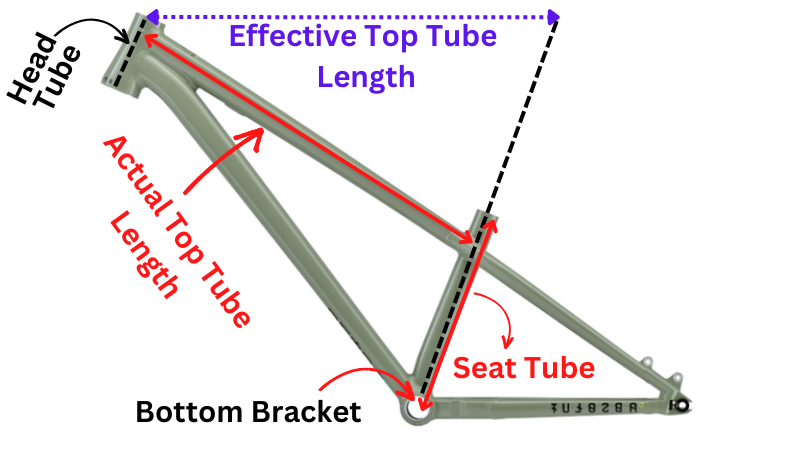
An effective top tube length or horizontal top tube length is the distance from the top of the head tube to the center of the seat post.
When you sit on the saddle, the effective top tube (ETT) measures how roomy the bike will feel rather than merely measuring the head tube and seat tube.
A cyclist’s weight will also be distributed on the bike depending on the ETT length. When the ETT is short, cyclists will put most of their weight on the front wheel, while when it is long, the cyclists will put more weight on the back.
Having the right weight distribution is crucial to a cyclist’s safety and ease of handling. It is dangerous to ride with too much weight on the front wheel, especially on slopes, while riding with too much weight on the back wheel reduces efficiency and makes climbing more difficult.
When selecting a dirt jumper, the following top tube length is recommended:
| Frame Size | Effective Top tube length |
| Small | 546-558mm/21.5″-22″ |
| Medium | 558-584mm/22″-23″ |
| Large | 584mm/23″+ |
Seat Tube Length is Irrelevant
The seat tube length is measured along the axis of the seat tube from the center of the bottom bracket.
Nowadays, seat tube length is used as follows:
1. To determine the lowest saddle position, particularly when sizing up a bike or considering a bike that has a classic level top tube.
2. To calculate the amount of saddle lowering possible when using a dropper seat post.
This all doesn’t matter in the case of dirt jumper bikes since they are designed for off-road use. In simple words, riders rarely sit down on their seats when using dirt jumper bikes.
Thus, it is not worthwhile to take seat tube length into account when choosing a new dirt jumper.
Stem Length & Handlebars
There are many different lengths of bike stems, ranging from stubby to super stretched. If you want an aerodynamic, racy, and aggressive riding position, a longer stem provides that.
In terms of comfort, a shorter stem length will make the bars closer to your seat, allowing you to sit more upright without straining your back.
The stem length affects your reach to the handlebars.
A good indicator that the stem length on your bike is correct is simply how you feel after riding the bike for some time.
Have you felt too stretched and strained to reach the hoods? Feeling cramped?
It is possible to distinguish between a longer and a shorter stem by measuring how much pain you experience in your neck, shoulders, and lower back.
A good way to determine the correct stem length is to sit on the bike with your hands on the tops of the hoods and look down at the front hub.
The handlebars should completely cover the front hub if the stem length is correct. If you can see the hub in front of the handlebar, then your stem is too short.
Most dirt jumper stems are between 30 and 50mm in length. It is okay to experiment with the above-mentioned stem length options. Depending on what you want to achieve, small changes can significantly improve comfort or aerodynamic performance.
Frames Size
Proper bike size is not just about comfort; it can help you prevent both short- and long-term injuries and improve your riding experience. An incorrectly sized frame will eventually cause lower back pain.
It’s not possible to compensate for the frame by adjusting the seat post or handlebar. Always choose the smallest frame you are comfortable with. The smaller the frame, the stiffer and lighter it is, which is what a pro cyclist needs.
Most Dirt Jumpers come in the Same Size
A majority of companies make dirt jumpers in one size because this market is very niche-specific. Due to the fact that they only make one size of this product, they mostly keep it standard with a 400mm reach and a 600mm top tube.
Human Anthropometry Matters
Each individual has a different proportion. This factor heavily influences the right bike for you. There is a high possibility that your anthropometry doesn’t meet the measurement guidelines.
Maybe because, according to your body proportion, you do not fit well in any chart specification. Therefore, when experimenting with bikes in bike shops, take anthropometry into account.
Dirt Jumper Bikes vs. Mountain Bikes — What’s the Difference
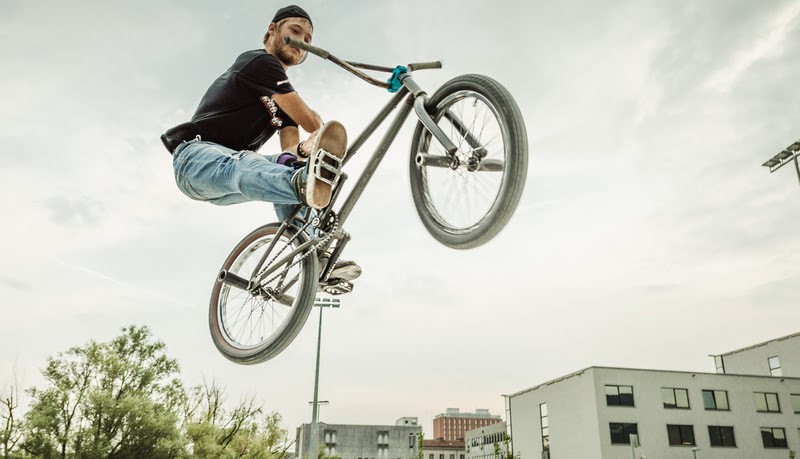
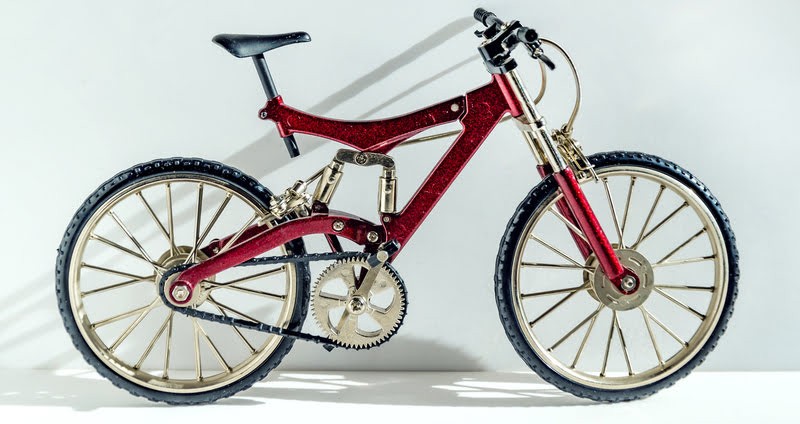
Dirt jump bikes are essentially mountain bikes that have been modified for use on jumps.
The modifications typically include lowering the center of gravity, adding more prominent tires and shocks, and changing the bike’s geometry. This makes the dirt jumper bike much more stable and able to withstand harder landings when jumping off of ramps or obstacles.
Mountain bikes are not typically built to handle dirt jumping and may not have the power or suspension to handle the unique demands of this type of riding.
Mountain biking is a versatile activity that can be used for many different purposes. Still, dirt jumping is a unique and challenging form of riding that requires specific equipment and skills.
As a result, we created this factor chart that will definitely help you decide what type of bike you should buy.
| Factors | Mountain Bikes | Dirt Jumper Bikes |
| Wheel Size | Mountain bikes usually come with two wheel sizes: 27.5” and 29” | Dirt jumper bikes are often equipped with 26-inch wheels |
| Gears | A growing number of mid-range mountain bikes feature 10 or 11 gears, while most high-end bikes come with 12 gears | There is only one gear on dirt jumpers to keep the chain tension at its maximum |
| Front Brake | Mountain bikes’ front brakes provide more traction for better stopping power, especially on enduro or downhill bikes | Due to the lack of front brakes, dirt jumpers are easier to maneuver in aerial tricks and stunts |
| Weight | The lighter the bike, the easier it will be to climb. If you’re a beginner, you’ll mostly see a positive difference in climbing hills on lighter bikes. Hence, mountain bikes are always designed to be lighter | Dirt Jumpers are heavy. To prevent mechanical failure during landing, strength over weight is prioritized. The wheels and frames are smaller, but they are still much stronger than lighter ones |
| Activity | Their performance is best suited to neutral surfaces and difficult terrain like hills | Dirt jumping can be done on any terrain but is most commonly found in obstacle-ridden skate parks and BMX tracks |
| SeatPost Position | Mountain bikes generally have a higher seat position which reduces the amount of power needed to pedal smoothly. By raising the seats, the rider can also fully extend their legs, which strengthens their muscles | There is a low seat-postion on dirt jumpers. This is because they aren’t designed for seated cycling |
The Best Dirt Jumper Bikes in the Market Today
There’s no denying that hardtails reign supreme when it comes to dirt-jumper bikes.
They’re exceptionally nimble, easy to maneuver, and provide plenty of suspension travel to take on whatever obstacles your dirt jumping might bring.
That said, not all hardtails are created equal. To make the best dirt jump bike for you, it’s important to consider a few key factors, including wheel size and suspension travel.
Here are three of the best dirt jump bikes on the market today and their corresponding specs:
NS Movement 1 — Poland’s Finest Dirt Jumper
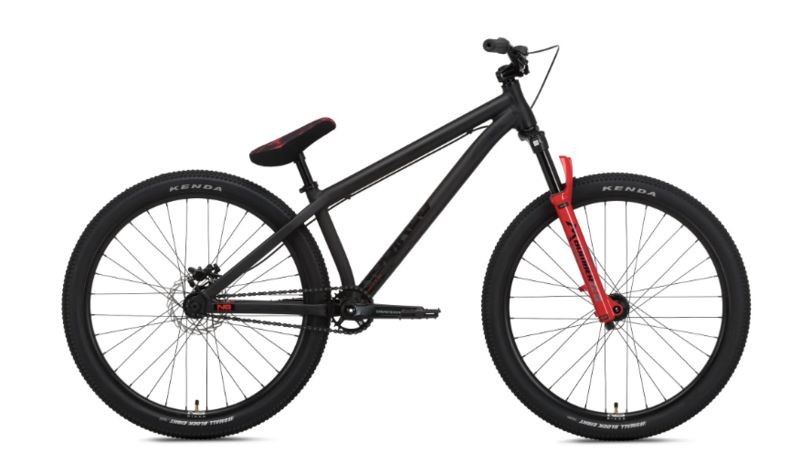
NS bikes are high-end dirt jump bikes that have an aluminum frame.
The bike is armed with a 100mm suspension fork, 26-inch wheels, and a Shimano Deore drivetrain. This makes it perfect for those looking to jump big and feel the wind in their hair.
This bike was designed to provide riders with an unequaled level of performance when it comes to dirt jumping.
This is thanks to its powerful motor, sharp handling, and durable construction.
The NS Movement 1 is also equipped with several features that make it ideal for riding on rough terrain. These include a beefy frame design, tough brakes, and a smooth-riding suspension system.
Additionally, the bike features a shock-absorbing saddle and comfortable grips, making it easy to control.
Overall, the NS Movement 1 is an excellent choice for dirt jumpers who are looking for a top-of-the-line machine that can handle everything from beginner jumps to more advanced obstacles.
Thanks to its powerful engine and tough construction, this bike is perfect for anyone looking for a versatile dirt jumping option that will not disappoint them.
Pivot Point — British Tube Design With American Flair
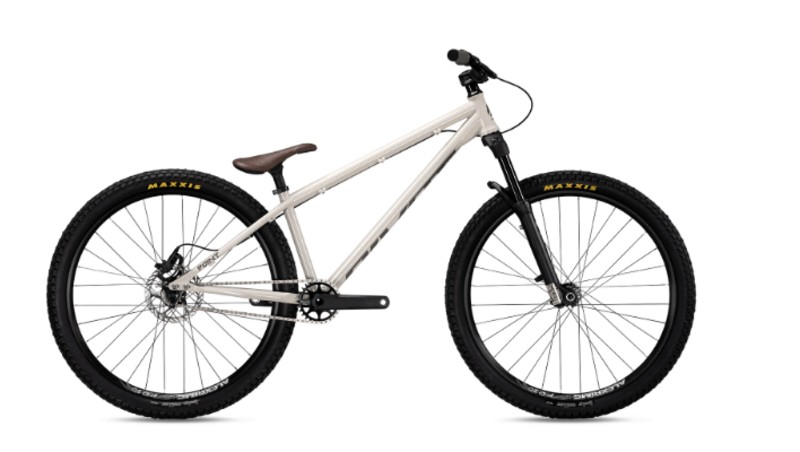
Pivot Point Dirt Jump is an all-new street complete bike that comes with 26″ wheels.
The Pivot Point is the newest addition to the dirt jumping world, and it sure does bring the heat. This dirt jump is constructed of double-butted 4130 Chromoly steel guns, giving it a much higher degree of stiffness than other dirt jumps.
Additionally, the geometry is designed with an emphasis on jump lines, giving riders incredible control over their jumps.
Whether you’re looking for a new challenge or you just want to ride some of the best dirt jumping in the world, Pivot Point is definitely worth checking out.
Haro Steel Reserve — A Unique Durable Option
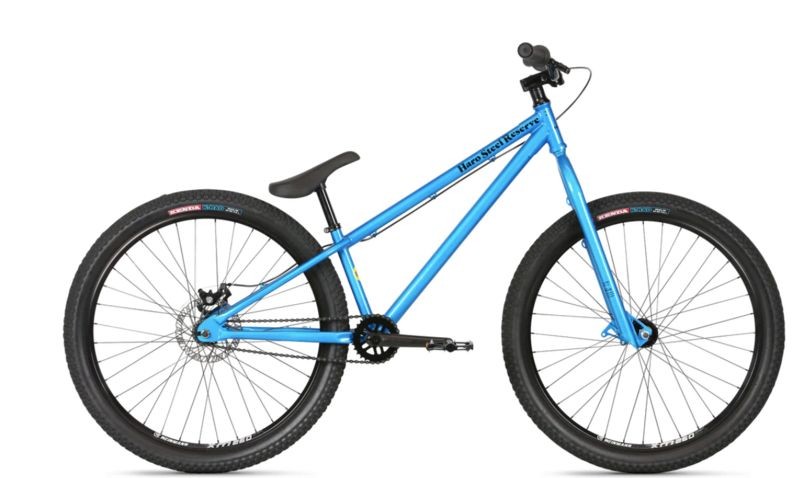
The Haro Steel Reserve is a great bike for anyone looking for a versatile trail bike. The Manitou Circus expert suspension fork provides a smooth, comfortable ride with 100mm of travel.
It also features a lockout feature that allows you to adjust the fork’s compression levels, giving you the control you need when tackling rugged terrain.
Additionally, the fork features rebound damping that provides consistent support when you need it most and a low-speed compression setting that helps to absorb large bumps while keeping your ride smooth.
Whether you’re looking for a durable suspension fork that will provide years of reliable performance or just want something easy to use and comfortable, the Haro Steel Reserve is sure to fit the bill.
Bottom Line
Today, dirt jumper bikes are among the most famous bike types used by riders of all skill levels. They’re perfect for those who want to try something new and exciting while maintaining the stability and control of mountain and BMX riding.
Whether you’re a beginner looking for an adrenaline-pumping activity to add to your repertoire or an experienced rider looking for a challenge, dirt jump biking is sure to provide it.
Else, if you have any suggestions or doubts, feel free to drop us a comment below. I will be more than happy to assist you with your query. Please follow our Facebook Page for more guides like this.
So what are you waiting for? Get yourself a dirt jump bike and start enjoying the ride!
Dirt Jumper Bikes — FAQs
How do you size a dirt jump bike?
Generally, a beginner will measure a dirt jumper by the distance between the seat and head, commonly called the horizontal top tube height. Taller people will probably need more tubes.
What is the best wheel size for dirt jumper bikes?
The 26-inch wheel heights are designed to be robust and stiff, while the smaller wheel size offers riders an easy-to-drive bike that can also be used for dirt jumping freestyle events.
What is the difference between a BMX and a dirt jumper?
Dirt jumpers have long handles and more stability for better height when jumping. BMX bikes have short, flat handles for fast and easy turns and better control while doing tricks and stunting.
Are dirt jumpers supposed to be small?
9/10 businesses producing jumpers have made one size with a top tube length of approximately 21.5″. The majority of the companies making dirt jumps have both long and short versions. Just make sure it’s not an accident.
Related:
